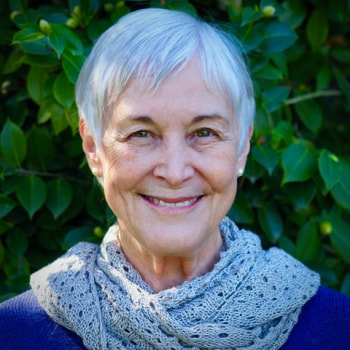Roberta Corson
|
Roberta Bassett Corson is retired as a clinical depth psychologist and United Methodist clergy. She was raised in Palo Alto, CA and lives in Saratoga, CA. She holds a B.A. in English Literature from Lawrence University, a M.Div. from Pacific School of Religion, and a Ph.D. from Pacifica Graduate Institute. She has been married for over 50 years and is mother of two and grandmother of two. As a medial woman who is aware of the many women like her who long to be called by name, she continues to explore the dimensions of mediality with the hope that these women can be named and known. They are not alone.
|
Stepping Out of the Shadows: Naming and Claiming the Medial Woman Today
|
Creative non-fiction
Once or twice in a lifetime, if one is fortunate and is listening, one hears one’s own name called. This is an experience akin to falling in love, to standing on a mountain peak, or to holding your own child for the first time. This is an experience of soul. It was just such an encounter that seeded this exploration, which is a work of soul. As you engage with me in this medial experience, I hope that you also will hear your name called. Medial women are highly intuitive and perceive what most do not. They are able to see through the material world to the deep unconscious as well as to experience what is unexpressed in the atmosphere. They gain insight from the unconscious through irrational channels such as visions, voices, dreams, images, and bodily perceptions. The medial tends to live between worlds: between the unconscious and the conscious, between the past, the now, and the future, between spirit and material, between life and death. Her knowing is universal rather than personal, and her task is to translate the messages she hears and knows to the larger community. This may come at some cost to her within Western culture. The feminine medial archetype is not understood or honored in our social order, and many medial women today unknowingly have made choices that have not served their medial nature. Some, like me, never knew their true nature until it was named. They survived by accepting other archetypes as their primary patterns of being, archetypes more acceptable to contemporary culture. Other medial women have moved to the interstices of society so that they may live their true identity freely, though they may feel like dandelions growing in the cracks of a sidewalk. Some have literally been tortured and cast out with the names “Weird,” “Insane,” or “Evil.” There are countless unknown medial women who long to become who they truly are, but who have been bruised by cultural wariness of the irrational and mysterious. |
Most journeys have a path from beginning to end, which is somewhat direct. This journey is different, for it is a journey through “the web of mediality.” This web moves in and out in many directions from the central point of mediality, with long and short strands that intersect and support each other. As we follow these strands, we will discover that some of them are sticky and uncomfortable, but since it is the medial that is spinning the web, she can be playful as well as insightful, and her web is beautiful. Together we shall venture into this web of mediality in all its shimmering colors and cob-webby shadows.
This book has been described by medial women who have read it as “water in the desert” and “a cosmic wink.”
This book has been described by medial women who have read it as “water in the desert” and “a cosmic wink.”











